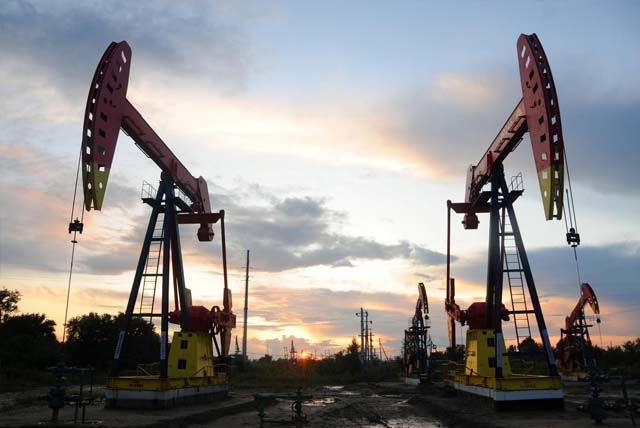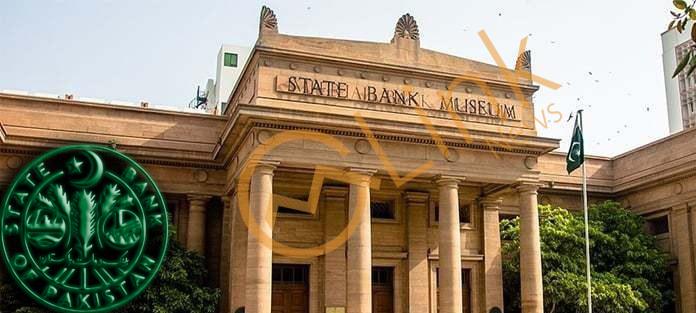March 13, 2023 (MLN): Pakistan’s oil and gas exploration sector has recorded a stellar financial performance during the first half of the ongoing fiscal year 2024, delivering substantial returns despite the looming concerns over the circular debt plan during the period.
The cumulative earnings of the sector clocked in at Rs247.16 billion, reflecting a substantial Year on Year (YoY) boost of 35.98% compared to the profit worth Rs181.76bn recorded in 1HFY23.
Oil & Gas Development Company Limited (PSX: OGDC) contributed the highest to the sector with a profit after tax of Rs123.3bn, followed by Pakistan Petroleum Limited (PSX: PPL) with net earnings of Rs68.78bn in 1HFY24.
The remaining companies of the sector also recorded higher profits with Mari Petroleum Company Limited (PSX: MARI) and Pakistan Oilfields Limited (PSX: POL) earning Rs48.15bn and Rs17.58bn, respectively.
Concerning shareholder returns, the sector paid a cumulative dividend of Rs129.65 per share, with MARI taking the lead with a dividend payout of Rs98, followed by POL which declared a return of Rs25.
Meanwhile, OGDC and PPL also rewarded a higher return of Rs4.15 and Rs2.5, respectively in 1HFY24.
The analysis of their combined profit and loss statement shows that the sector became more profitable due to growth in revenue from contract customers.
The sector’s topline improved 19.48% YoY and reached Rs527.35bn in 1HFY24 against the revenue of Rs441.38bn posted in 1HFY23.
Positive price variance was the key to success which was derived due to the significant devaluation of the Pakistani Rupee (PKR) against the mighty Dollar US dollar.
The average exchange rate during this half stood at 287.34 as compared to 223.66 during the corresponding period, showcasing a depreciation of 22.16% over the period.
This proved to be beneficial for the oil giants as they earned more in their dollar-denominated foreign earnings when converted in terms of domestic currency.
However, the gains were capped as the average international crude oil price dropped from an average of $93.23 in 1HFY23 to $84.33 in 1HFY24, based on the key benchmark, Brent Crude.
Despite the rising geopolitical tensions and extended supply cuts by the OPEC+ group, crude oil prices remained lower in comparison to the corresponding period last year.
The growth in sales successfully overcame the rise in the sector’s expenditures related to taxes, Royalties, other levies, other charges, and operation costs.
As a result, the sector's gross profit grew 16.31% YoY and stood at Rs353.46bn compared to the gross earnings recorded in the first half of fiscal year 2023.
On the expense side, the companies were able to carry out their exploration facilities quite efficiently as the overall costs associated with the activity reduced by 32.97% YoY to Rs18bn.
On the other hand, the sector's administrative expenses and other charges surged 57.08% and 19.98% YoY, respectively due to high inflationary pressures persisting in the economy.
To curb the pressure of soaring prices, the central bank raised the policy rate to a record-high level of 22%. This turned out to be beneficial for the exploration companies as during this half, they reported a cumulative net finance income of Rs8.08bn versus net finance costs of Rs72.6m witnessed in 1HFY23.
Evaluating further, the inflow of income through associates witnessed a slight improvement, while the other income section registered a modest fall of 19.98% YoY.
Beyond the previously mentioned sales surge that resulted in gains for the sector, a favorable tax adjustment provided an equivalent boost.
The Supreme Court of Pakistan (SCP)’s decision to exclude the deduction of royalties from well-head value for depletion allowance benefitted the sector as it resulted in the reversal of prior years’ tax provisions, ultimately reducing the tax charge.
The collective tax expenditure bared by the sector stood at Rs87.89bn in 1HFY24, compared to the tax expense worth Rs104.66bn incurred in 1HFY23, reflecting a drop of 16.03% YoY.
Further benefit came for the sector in the form of hiked gas prices which took effect in January 2023 and November 2023, following the escalating burden of the circular debt in the economy associated with the gas and power sector.
This strategic adjustment contributed to a deceleration in the accumulation of circular debt, thereby bolstering the financial resilience, said PPL.
| Unconsolidated profit and loss statement for the six months ended December 31, 2023 | |||
|---|---|---|---|
| Dec-23 | Dec-22 | % Change | |
| Revenue from contracts with customers | 527,354,945 | 441,380,100 | 19.48% |
| Operating expenses/sales tax | -104,717,677 | -76,797,305 | 36.36% |
| Royalties, other levies and charges | -69,172,792 | -60,681,350 | 13.99% |
| Gross profit | 353,464,476 | 303,901,445 | 16.31% |
| Exploration expenses | (18,004,443) | (26,858,945) | -32.97% |
| Administrative expenses | (21,631,113) | (13,770,550) | 57.08% |
| Net Finance income/ costs | 8,080,594 | (72,598) | – |
| Share of profit of associates | 4,450,052 | 4,383,138 | 1.53% |
| Other charges | (23,739,162) | (19,785,675) | 19.98% |
| 302,620,404 | 247,796,815 | 22.12% | |
| Other income | 32,426,217 | 38,629,407 | -16.06% |
| Profit before taxation | 335,046,621 | 286,426,222 | 16.97% |
| Taxation | (87,890,457) | (104,663,232) | -16.03% |
| Profit after taxation | 247,156,164 | 181,762,990 | 35.98% |
Outlook
It is pertinent to note that the circular debt and its resolution plan have been the center talk of the domestic markets and the International Monetary Fund (IMF) has also raised alarms over it as a serious long-term issue.
The government recently disclosed that the long-awaited negotiations with the IMF regarding the settlement of the circular debt have started. Hence the outlook of the sector’s operational and financial performance is heavily dependent upon the successful implementation of the circular debt plan.
Looking ahead, the sector is all set to witness the favorable winds associated with the implementation of the Tight Gas (Exploration & Production) Policy 2024 which was made public by the government on February 01.
The policy aims to incentivize the oil and gas industry to invest in the exploration of unconventional/tight gas resources that have not been produced due to non-commercial viability.
The incentives of this Policy shall apply to the gas discoveries that qualify and are accepted as “Tight Gas” under the existing and future Exploration Licences (EL), Petroleum Concessions Agreements (PCA), and Development & Production Leases (D&P)/fields and Mining Leases (ML).
Furthermore, the government has also executed Petroleum Concession Agreements and Exploration Licenses for 8 blocks with these four companies, stipulating a minimum investment of over $33.3 million to be carried out in these blocks for prospecting within three years.
According to the former Minister for Petroleum Muhammad Ali, this development will bear fruit for the country in the form of additional hydrocarbon reserves during the next few years.
Moreover, the execution of the Exploration Licenses and PCAs will not only enhance investment in the petroleum sector but will also contribute to bridging the energy demand and supply gap.
The newly established Special Investment Facilitation Council (SIFC) will also play its role in attracting foreign investment in Pakistan. The oil and gas exploration sector being one of the major attractions to foreign investors is poised to witness a substantial boost.
Copyright Mettis Link News
Posted on: 2024-03-13T12:51:11+05:00









